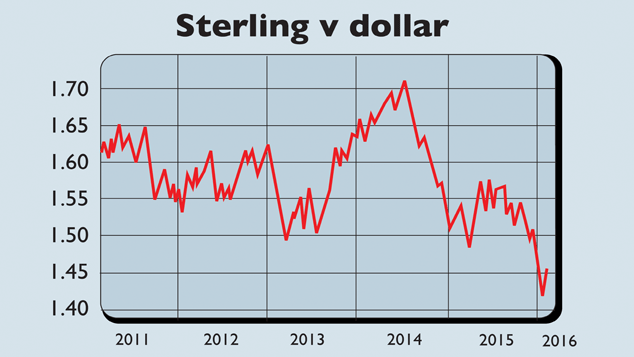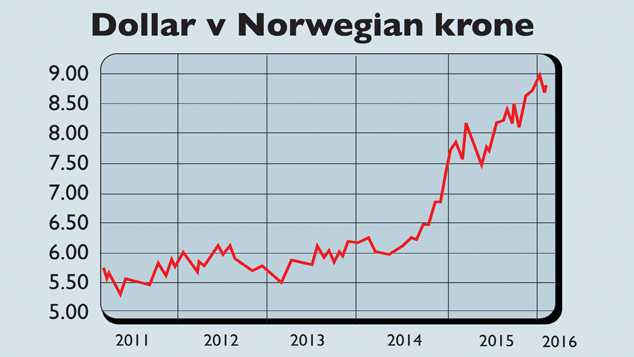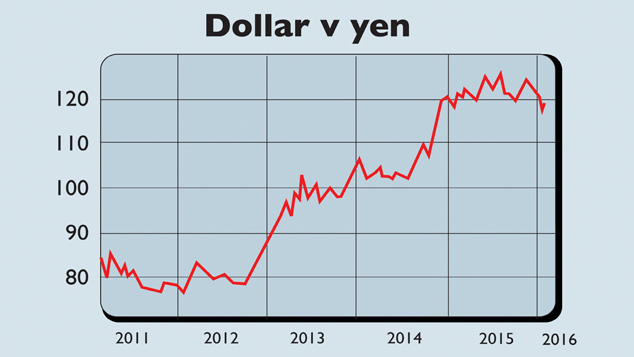The pound: steady as she goes
Cable, as the sterling-dollar exchange rate is known, looks quite drastic right now – we’re getting back to levels last seen at few points since the mid-1980s. However, then as now, you have to remember that the other side of the story is the strong US dollar. You could attribute the pound’s weakness back then to British problems and, of course, that didn’t help, but it was also very much about the dollar.
If you look at the sterling index (the pound’s performance against a trade-weighted basket of currencies), then while the currency was somewhat weak, it wasn’t as extreme as it seemed compared to the dollar. In fact, from 1980 all the way through to 2007, it was pretty steady. You could even argue that we’ve been too strong recently. It’s also worth remembering that the pound is highly correlated with financial assets, which is unsurprising, given that we’re largely a financial economy. So when markets are falling, as they are now, the pound tends to fall too.
The other issue for the pound is our significant current-account deficit. People have also got overexcited about the prospect of Brexit and all the horrible things that was going to mean for the pound. But if you look at it based on purchasing power parity, the pound was roughly 8% overvalued back at the end of November, so the recent correction has pretty much knocked that out of it. We’re basically back to fair value and, in a low-inflation era, the purchasing power parity of the Western world isn’t changing much.
In fact, so many people have pounced on the Brexit story (as the near-record level of “short” positions in sterling demonstrates) and the move in sterling has been so great already that we could easily see a rally. In financial markets it’s always better to travel than to arrive. Any sign that Brexit isn’t on the cards (regardless of whether you think it’s a good idea to leave the EU, as I do), and we’ll see the pound rally sharply.
The Norwegian krone: going cheap
The collapsing oil price has, of course, had a huge impact on Norway, which we can see in the currency. The Norwegian krone has weakened sharply, yet it’s a treble-A-rated country. It’s a great safe haven right now – it’s got plenty of money in that sovereign wealth fund. So if you’re bullish on oil, which I am, then the Norwegian krone is really interesting.
Yes it depends on how you play it, but as long as you’re not using borrowed money (ie, spread betting or similar leveraged ways to play currency trades) then the risk, in terms of volatility, of your typical major currency is well below your risk in equities. It’s one for the long term.
The yen: stubbornly low
This might sound surprising, but the Japanese yen is fundamentally cheap. It’s floating around the 120 to the dollar mark when purchasing power parity in fact suggests it should be around 90. But it’s going to be volatile. As last week’s actions by the Bank of Japan demonstrate, it might be undervalued, but central bank policy (and a core pillar of “Abenomics”) is to keep the yen cheap. In our current deflationary environment, there’s no telling when all this competitive devaluation will end.
On top of that, the short yen trade that became consensus after Abenomics came in a few years ago has fizzled out. Now the consensus trade is to be long yen – it’s a “risk-off” currency, almost the opposite of the pound in that it tends to rise when markets are falling. That has to change before the yen can rise significantly.
This may sound counterintuitive, but when the majority of traders are long, it’s hard for an asset to rise much further, as everyone who wants to be a buyer already is. I think that it’s ahead of the curve to talk about this, but in the end, this could be like Black Wednesday in reverse – the market forcing a currency higher in the face of a central bank’s desperation to keep it weak.
• Read more of Charlie’s views in the Fleet Street Letter by signing up here.
Category: Economics




